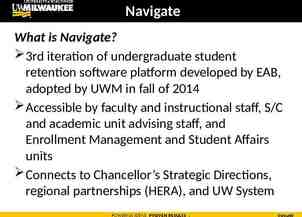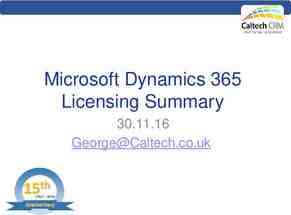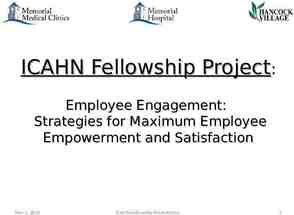UBIWARE: “Smart Semantic Middleware for the Internet of
69 Slides4.87 MB
UBIWARE: “Smart Semantic Middleware for the Internet of Things” Resource Agent “Device” Resource Agent “Expert” Resource Agent “Service” S-APL ICINCO-2008 University of Jyväskylä Industrial Ontologies Group 13 May 2008, Funchal, Madeira, Portugal
Authors: Artem Katasonov Olena Kaykova Oleksiy Khriyenko Sergiy Nikitin Vagan Terziyan URL: http://www.cs.jyu.fi/ai/OntoGroup Industrial Ontologies Group University of Jyväskylä
UBIWARE Team: Industrial Ontologies Group University of Jyväskylä Kharkov National University of Radioelectronics Researchers Vagan Terziyan (Head) Olena Kaykova Artem Katasonov Oleksiy Khriyenko Sergiy Nikitin Michal Szydlowski Joonas Kesäniemi Michal Nagy Arnim Bleier Nikos Mouchtaris URL: http://www.cs.jyu.fi/ai/OntoGroup Contact Person: Timo Tiihonen e-mails: [email protected] [email protected] phone: 358 14 260 2741
Three alternative trends of Web development Human Communities Machines, devices, computers Facilitates Human-toHuman interaction Applications, services, agents Facilitates Machine-toMachine interaction Facilitates Software-toSoftware interaction
New integral trend of Web development Web of intelligent entities (intelligence services), browseable, searchable, composable, configurable, reusable, dynamic, mobile Involvement of various mathematical models to be service components results to more general Web of Abstraction Facilitates Intelligence-toIntelligence (also model-to-model) interaction
“Semantic Wave” (Web X.0) We may add here: Web 5.0 will come finally and it is about connecting models in a “Global Understanding Environment” (GUN), which will be such proactive, selfmanaged evolutionary Semantic Web of Things, People and Abstractions where all kinds of entities can understand, interact, serve, develop and learn from each other. “The semantic wave embraces four stages of internet growth: [Vagan Terziyan] Web 1.0, was about connecting information . Web 2.0 is about connecting people. Web 3.0, is starting now and it is about connecting knowledge Web 4.0 will come later and it is about connecting intelligences in a ubiquitous web where both people and things can reason and communicate together.” [“Semantic Wave 2008” , Mills Davis ]
Beyond Web 5.0 ? Human v2.0 ?! [Ray Kurzweil] http://www.youtube.com/watch?v BywCMkbG-Jg
Overall Goal Based on combination of Semantic and Agent technologies, we aim at designing a new generation middleware platform (UBIWARE) which will support and essentially simplify design, implementation and operation of selfmanaged, complex, flexible and extendable industrial systems (e.g. information-, business intelligence-, expert-, condition monitoring-, diagnostics-, maintenance-, etc. systems) consisting of mobile, distributed, heterogeneous, self-descriptive, self-aware, shared, reusable and configurable components of different nature.
What is UBIWARE ? (1) UBIWARE is a generic, domain independent middleware platform, which is meant to be able to provide the following support: integration; interoperability; proactivity; communication, observation, negotiation, coordination and collaboration; automation, design and installation; lifecycle management, execution monitoring, diagnostics, maintenance; self-descriptiveness, semantic search, discovery, sharing, reuse; planning and decision-making; adaptation; learning, mining, knowledge discovery; context-awareness; self-management including self-configuration; security, privacy and trust; etc. for (see next slide)
What is UBIWARE ? (2) for the following resources, systems and components (including their groups): data information and knowledge: data, metadata, knowledge, logic, ontologies; software and services: software components, software agents, software and information systems, services including Web-services; humans: users, operators, experts, administration, customers, patients, doctors, etc; hardware: machines, devices, networks, embedded electronics, RFID; organizations; intangibles: human and organizational capital, innovations, property rights, trust and reputation, brand recognition, etc.; processes: behaviors, technologies and business models; interfaces; intelligence: reasoning, inference, planning, learning, data-mining, knowledge discovery, etc engines; ecosystems: environments, smart spaces, other middleware and CSCW tools; abstractions and mathematical models; etc.
What is UBIWARE ? (3) Due to heterogeneity of provided services and supported components, UBIWARE is based on integration of several technologies: Semantic Web, Distributed Artificial Intelligence and Agent Technologies, Ubiquitous Computing, SOA (ServiceOriented Architecture), Web X.0, P2P and related concepts. The research and design on UBIWARE is started by Industrial Ontologies Group within UBIWARE project: “Smart Semantic Middleware for Ubiquitous Computing” (June 2007 – May 2010) funded by Tekes and industrial companies. Project web page: http://www.cs.jyu.fi/ai/OntoGroup/UBIWARE details.htm
What is UBIWARE (in short) UBIWARE is a tool to support: design and installation of , autonomic operation of interoperability and among complex, heterogeneous, open, dynamic and self-configurable distributed industrial systems; and to provide following services for system components: adaptation; automation; centralized or P2P organization; coordination, collaboration, interoperability and negotiation; self-awareness, communication and observation; data and process integration; (semantic) discovery, sharing and reuse.
Why Semantic Web? (Ora Lassila) Semantic Web is important for UBIWARE just because UBIWARE is meant to handle also new problems, which may appear later
Why Why Agents? Agents? Growing complexity of computer systems and networks used in industry need for new approaches to manage and control them IBM vision: Autonomic computing – Self-Management (includes self-configuration, self-optimization, selfprotection, self-healing) Ubiquitous computing, “Internet of Things” huge numbers of heterogeneous devices are interconnected “nightmare of pervasive computing” when almost impossible to centrally manage the complexity of interactions, neither even to anticipate and design it. We believe that self-manageability of a complex system requires its components to be autonomous themselves, i.e. be realised as agents. Agent-based approach to SE is also considered to be facilitating the design of complex systems
GUN Concept GUN – Global Understanding eNvironment GUN Global Environment Global Understanding Proactive Self-Managed Semantic Web of Things (we believe) “Killer Application” for Semantic Web Technology
GUN and Ubiquitous Society GUN can be considered as a kind of Ubiquitous EcoSystem for Ubiquitous Society – the world in which people and other intelligent entities (ubiquitous devices, agents, etc) “live” together and have equal opportunities (specified by policies) in mutual understanding, mutual service provisioning and mutual usability. Human-to-Human Human-to-Machine Machine-to-Human Machine-to-Machine Agent-to-Agent
Challenge 1: General Adaptation Framework S-APL RDF-Based Semantic Agent Programming Language Universal reusable semantically-configurable adapters
Challenge 2: General Proactivity Framework Role Role “Feeder” “Feeder” descriptio descriptio nn Role Role “SCADA” “SCADA” description description S-APL Role Role “Maintenanc “Maintenanc eeworker” worker” description description Universal reusable semantically-configurable behaviors
Challenge 3: General Networking Framework Scenario Scenario “Predictive “Predictive maintenance” maintenance” description description S-APL Scenario Scenario “Data “Data integration” integration” description description Universal reusable semantically-configurable scenarios for business processes
UBIWARE Subgoals Core DAI platform design (UbiCore); Policy-Based Control of MAS (PBC) Managing Distributed Resource Histories (UbiBlog); Self-Management, Configurability and Integration (COIN); Smart Interfaces: Context-aware GUI for Integrated Data (4i technology); Industrial cases and appropriate prototypes.
1: Core DAI Platform Design (UbiCore) The core platform should provide means for building systems that are flexible and consist of heterogeneous autonomous components, yet predictable in operation. A major challenge: a semantic/ontological approach to coordination - to enable the components to communicate their intentions with respect to future activities and resource utilization and to reason about the actions, plans, and knowledge of each other, in real time.
UBIWARE Platform Architecture .class Script: Configuration Settings Beliefs Log Script: Policy Constraints Storage S-APL .class Activity Activity Activity Activity Activity Activity Activity Script: Role-Based Behavior Rules Activity Assign Settings Activity Live Activity Behavior Engine S-APL
Layered Agent Architecture
“Visible” to other agents RBE RBE RBE RBE HardMind (facts, rules, policies, plans) RAB Shared RABs SoftMind Beliefs RAB Reusabl e Atomic Behavio r Shared Beliefs Shared RBEs RAB RAB – Meta-Beliefs HardSoul Meta-Beliefs (preferences) Shared RAB Reusable Behavior Engine “Life” Behavior (GENOME) RBE – SoftSoul Configuration Added 2 September 2008 by Terziyan Vagan “Soul-Mind-Body-Genome-Ontonut” Agent Architecture SoftBody HardBody Shared Hardware Environment May be an agent
Added 2 September 2008 by Terziyan Vagan What is Environment ? Environment Environment of an agent is the remaining part of the UBIWAREsupported world (physical or virtual) if to exclude the agent itself (with its soul, mind, body, etc). Main groups of entities in the environment of the agent: Entities to which the agent provides services; Entities from which the agent consumes services; Conflicting entities, or other agents, which share entities of described above categories: the same service providers or service consumers; Any combination of the above.
Added 2 September 2008 by Terziyan Vagan Environment: Service Consumers Environment: Service Consumers Service consumers (SC) within agent environment are the entities to which the agent provides services. Main groups of service consumers of the agent: Entities (devices, humans, software, other agents, etc.) under the agent monitoring (supervision, control, diagnostics, maintenance, etc.); Entities (devices, humans, software, other agents, etc.) to which the agent provides needed information (pull or push); Entities (devices, humans, software, other agents, etc.) to which the agent provides assistance in their operation (pull or push); Monitoring Entities (devices, humans, software, other agents, etc.) to which the agent committed to serve like an instrument (“slave”) in their operation and can be anytime configured and fully controlled by them; Information Any combination of the above. Instrument Assistance
Added 2 September 2008 by Terziyan Vagan Environment: Service Providers Environment: Service Providers Service providers (SP) within agent environment are the entities, which provide services to the agent. Main groups of service providers of the agent: Entities (humans or other agents) which monitor the behavior of the agent (supervision, policy-based control, reconfiguration, etc.); Entities (devices, humans, software, databases, other agents, etc.), which provide needed information (pull or push) to the agent; Entities (devices, humans, software, other agents, etc.) which provide assistance to the agent in its operation (pull or push); Entities (devices, software, other agents, etc.) which the agent can use as instruments in service provisioning (pull) and which are fully committed for that (aka “slaves”) and are under full control by the agent while used; Information Any combination of the above. Instrument Monitoring Assistance
On Ontonuts in UBIWARE: Ontonuts as agent-driven proactive service capabilities (“Ontobilities”) Added by Vagan Terziyan 17 September, 2008
UBIWARE Agent: Possible Future Architecture RBE – Reusable Behavior Engine SoftSoul “Life” Behavior Genome is part of semantically marked-up agent configuration settings, which can serve as a tool for agent evolution: inheritance crossover and mutation “Visible” to other agents through observation RBE RBE RBE SoftMind HardMind Beliefs RAB (facts, rules, policies, plans) RAB Shared RABs RBE Shared Beliefs Shared RBEs RAB contained, self-described, semantically marked-up proactive agent capability (agent-driven ontonut), which can be “seen”, discovered, exchanged, composed and “executed” (internally or remotely) across the agent platform in a task-driven way and which can perform social utility-based behavior (GENOME) Ontobility is self- Meta-Beliefs HardSoul Meta-Beliefs (preferences) Shared Configuration Reusabl e Atomic Behavio r RAB RAB – SoftBody HardBody Shared Hardware Environment May be an agent
Ontonuts: Competence Profile of an Agent as a service provider (“what can I do” and “what can I answer”) and appropriate service plan (“how I do or answer ”) You can ask me for ontonut a) action b) information
External view to ontonuts: Shared Competence Specification External Internal You can ask me for a) I can open the door #456 b) I can fly c) I can use knifes d) I can build house from wood e) I can visualize maps f) I can grant access to folder “444” a) I know everything about Mary b) I know everything about cats c) I know what time it is now d) I know all lovers of John e) I know grades on We consider ONTONUTS be shared S-APL specifications of these competences chemistry of alltopupils
Internal view to ontonuts: Action or Query Plans External Internal You can ask me for a) I know everything about Mary S-APL plan of querying either own beliefs or external database about Mary a) I can open the door #456 S-APL plan of opening the door #456 We consider ONTONUTS to be also an internal plans to execute competences
Possible general rule of ontonut appearance External Internal You can ask me for IF I have the plan how to perform certain complex or simple action or the plan how to answer complex or simple query AND {time-to-time execution of the plan is part of my duty according to my role (commitment) OR I am often asked by others to execute action or query according to this plan} THEN I will create ONTONUT which will make my competence on this plan explicit and visible to others
Example (1): Atomic Ontonut #1 I can answer any queries on mental diseases of citizens of X Give me the list of women from X with mental diseases diagnosed after 2006 I know how appropriate database is organized, I have access rights and I am able to query it City X Central Hospital Relational Database
Example (2): Atomic Ontonut #2 I can answer any queries on loans in Nordea bank Give me the list of Nordea clients with loans of more than 100 000 EURO I know how appropriate database is organized, I have access rights and I am able to query it Nordea XML Database
Example (3): Complex Ontonut #3 I can answer any queries on mental diseases and loans of Nordea bank clients from X I know how to split query to two components; I know to whom I can send component queries (I have contracts with them); and I know how to integrate outcomes of these queries Give me the list of Nordea clients from X with loans of more than 200 000 EURO and who has more than 2 mental disorders during last 5 years
Summary: Ontonut is something similar to OWL-S Semantic Web Service description (i.e. combination of Profile, Model, Grounding) A Service is a kind-of Resource in the Web, i.e. some Web resources provide services. What does the service require of the user, or other agents, and provides for them? The answer to this question is in ServiceProfile How does it work? The answer to this question is in ServiceModel How is it used? The answer to this question is in ServiceGrounding. ServiceGrounding
A Service as well as an Ontonut provides some Function G Service Grounding X Service Model F Y Service Profile
An Ontonut as well as a Service provides some Function Service Profile External Service Grounding Service Model Internal
Service Profile, Model and Grounding example: “Cinema Cashier” G X F 1: cinema address; 2: cinema movie schedule; 3: cinema cash-desk location; 4: nock to the cash-desk window and, when it opens, make your order (X) Y x1: movie name; x2: time; x3: number of tickets; x4: seats preference; x5: money 1: takes x1, x2, x3, x4; 2: checks availability of x3 tickets for the x1 movie, at x2 time, which suits x4 constraint ; 3: finds one ticket prise from the price list; 4: calculates price for x3 tickets: price one seet price * x3; 5: takes x5; 6: calculates y2 ( y2 x5 – price ); 7: gives y1, y2. y1: movie tickets; y2: change
On Ontonuts in UBIWARE: Ontonuts as distributed querying capability Added by Sergiy Nikitin 17 September, 2008
Original view on Ontonuts (distributed querying) Data Service Agent Beliefs Ontonuts Role Script Files Ontonut Bindings DB/KB agent-to-agent servicing adaptation of external sources
Main components of Ontonuts architecture Business Logic Script Ontonuts bindings Ontonuts triggering rule Agent Beliefs (S-APL code) Ontonuts Role Script Query Planner QueryAnalyser QueryPlanner Query Plan Executor SQLReader TextTableReader ExcelReader MessageSender MessageReceiver Reusable Atomic Behaviors (Java code) Excel sheet RDBMS CSV file Data Service
Ontonuts example code :DiaryCommentNut rdf:type di:DBOntoNut. :DiaryCommentNut :hasDataSource :datasourceid. :DiaryCommentNut :hasSQLQuery "SELECT CommentID, EntryID, Title FROM dbo.Comment ". :DiaryCommentNut :hasMapping { :commentID di:mapsTo "CommentID". :entryId di:mapsTo "EntryID". :commentTitle di:mapsTo "Title"}. :DiaryCommentNut :hasTransformationScript { {* :table {?rowid :row { CommentID :column ?commentid. EntryID :column ?entryid. Title :column ?title} } } { :DiaryComment :instance { ?rowid rdf:type :DiaryComment. ?rowid :commentID ?commentid. ?rowid :entryId ?entryid. ?rowid :commentTitle ?title} }. }. :DiaryCommentNut :hasDataPattern { ?rowid rdf:type :DiaryComment. ?rowid :commentID ?commentid. ?rowid :entryId ?entryid. ?rowid :commentTitle ?title}.
Querying usecases Event flow integration Additional information Get supplementary device configuration data for a particular event-based view Complex mining Time-based distributed query to different sources (extract events from different systems by filtering them with the same time frame) Collect information from a set of sources, where inputs of subqueries are dependent on outputs of the preceding subqueries Combination of all cases mentioned above {?diaryEvent :hasCommentText ?ctext. ?diaryEvent :hasTime ?ctime. ?ctime ?timestart. ?ctime ?timeend. ?alarmHistorian :hasAlarm ?alarm. ?alarm :hasTime ?atime. ?atime ?timestart. ?atime ?timeend. ?timestart 2008.09.08T12:00.00. ?timeend 2008.09.08T23:59.00. } {?diaryEvent :hasCommentText ?ctext. ?diaryEvent :hasTime ?ctime. ?ctime 2008.09.08T12:00.00. ?ctime 2008.09.08T23:59.00. ?diaryEvent :hasTag ?eventtag. ?eventtag :hasMappingTo ?node ?dpm :hasNode ?node. ?node :hasAlarmLimit ?alimit } {?dpm :hasNode ?node. ?node :hasPerfIndex ?pindex. ?pindex 0.5 . ?node :hasMappingTo ?eventTag. ?diaryEvent :hasTag ?eventTag. ?diaryEvent :hasComment ?comment }
Query types Parallel IOMIO (sequential) subqueries can be executed independently from each other and results are merged Inputs are dependent on the outputs from subqueries to other sources Hybrid (a combination of two above) Possible cases: Results of two or more parallel subqueries are merged and used as an input for a subsequent subquery Result of one subquery is used as an input to a set of parallel subqueries Result of a subquery is used as an input for both subsequent and nonsusequent, parallel and non-parallel subqueries
Ontonuts: a mechanism for provision of dynamic information An analog of platform-embedded constructs like: sapl:Now sapl:is ?time (gets current system time) But can be flexibly (re-)defined by user fingrid:CurrentVoltage sapl:is ?voltage metso:CurrentOilLevel sapl:is ?oillevel innow:CurrentUsersOnline sapl:is ?usersonline The approach simplifies the implementation of the agent’s business logic by introducing computable elements. The values of these elements are computed on-demand (only when a query appears in agent’s beliefs)
Ontonuts: a mechanism for provision of dynamic information(2) When extended to more abstract level, computable values can be applied for: counting statistics over dynamically updated data (e.g. average alarm rate per day, or number of students at the lecture now) collecting dynamic information about others (e.g. request “what is John’s location at the moment” would look like: “:John :currentLocation ?location”)
Ontonuts vs. Softbody (Environment) An agent can seamlessly read the information from the environment in a similar manner as from the Ontonut, the observable properties in the environment can provide different kind of information, that directly goes to agent’s beliefs, however, environment represents common and most frequently used properties, whereas agent may need to perform its own specific calculations. The complexity of the calculations will be hidden behind Ontonut.
“Soul-Mind-Body-Genome-Ontonut”: Added 2 September 2008 by Terziyan Vagan Use of S-APL provides new opportunities Mobility of (Souls, Minds, Bodies, Genomes, Ontonuts); Integration of (Souls, Minds, Bodies, Genomes, Ontonuts); Semantic Search and Querying of (Souls, Minds, Bodies, Genomes, Ontonuts); Reasoning based on (Souls, Minds, Bodies, Genomes, Ontonuts); Configurability of (Souls, Minds, Bodies, Genomes, Ontonuts); Inheritance, crossover, mutation, evolution, etc. of (Souls, Minds, Bodies, Genomes, Ontonuts); Learning of (Souls, Minds, Bodies, Genomes, Ontonuts); Compilation of Minds, Agents towards executable ones.
S-APL data model (example) G C1 accordingTo John C1 C2 implies C3 C2 C3 Time is Summer Sun is Shining
S-APL: example beliefs Simple belief :John :Loves :Mary Complex belief {:John :Loves :Mary} :accordingTo :Bill Goal / desire: :I :want {:John :Loves :Mary}
New semantics of RDF Statement in S-APL (object - executable resource) Resource i Property m Semantics of such statement means that the value of the Property m of the Resource i can be obtained as a result of execution of the procedure (query, service, function, etc.) represented as Resource j exe: Resource j executable resource S-APL
Added 17 September 2008 by Terziyan Vagan Service Call (something like) { sapl:I sapl:Call {sapl:I sapl:have ?X } } sapl:configuredAs { ?X sapl:is :busTicket . ?X :fromPlace :Tampere . ?X :toPlace: Helsinki . ?X :hasPriseEuro ?Y . ?Y :isLessThan 30 . {sapl:I sapl:negotiate ?Z} sapl:configuredAs { ?Z sapl:MIN ?Y } }
2: Policies (organizational constrains put on top of individual behavior rules) Instructions (e.g. “drink at least 2 liters of water every day”); Conditional Instructions (“whenever hear alarm, call security”) Commitments (e.g. “promise to love forever”) Conditional Commitments (e.g. “promise to take care in case of illness”) Restrictions (e.g. “no smoking”) Conditional Restrictions (“do not use elevator in case of fire”)
Policy-based agreement and policy commitment Agreement Manager Policyi (R1, R2, R3) hasPolicy Agreementj (R1 Vagan, R2 Oleksiy, R3 Artem) Policy commitment isMemberOf (hasRole R1) Vagan isMemberOf (hasRole R2) Oleksiy isMemberOf (hasRole R3) Artem
3: Managing Distributed Resource Histories (UniBlog) Managing Distributed Resource Histories is going to be a set of tools, which will support each ubiquitous resource to collect and semantically markup own history during the lifecycle, to query when needed own history or external distributed histories of other entities, to integrate the histories, to make mining (utilizing intelligent data mining and machine learning techniques) of the histories to discover knowledge, and finally to manage acquired distributed knowledge.
Industrial Resource Lifecycle and History S-APL States Measurement Condition Monitoring Predictive Measurement Symptoms Fault detection, alarms Predictive Monitoring Data Warehousing Conditions Warehousing History Industrial Resource Diagnostics S-APL Maintenance Predictive Diagnostics Predictive Maintenance Diagnoses Warehousing Plan Warehousing Fault isolation Maintenance Plan Maintenance Planning Fault identification, localization Diagnoses
Nature of Distributed content (1) Resource Resource agent: observes the target resource and other resources in its environment, collects information about target resource throughout its history and takes care of it Agents of other resources: may observe “foreign” resource if needed, collect information about it and communicate this information with others if asked
4: Self-Management, Configurability and Integration (COIN) Self-management, Configurability and Integration will cover the aspects of evolutionary and temporal changes on the platform. In the dynamic environment every resource may modify its own characteristics due to adequate reaction (self-awareness) on the surrounding environment or internal changes. Changes in a resource’s behavior may influence business process chains, in which the resource is involved. We target a well-defined resource configurability framework which will define clear mechanisms of configuration including contracting, re-negotiation and re-composition taking into account agent-driven proactivity and dynamics.
Resource Configuration Example hasConfiguration (ID1,ID2) Locomotive (ID3) hasColor (ID3, “Muticolor”) hasBehind (ID3, ID4) Car Train (ID1) (ID4) hasColor (ID4, “Beige”) hasPart (ID1,ID3) hasBehind (ID4, ID5) hasPart (ID1, ID4) hasAhead (ID4, ID3) hasPart (ID1, ID5) hasDestinationTo (ID1, “Paris”) hasDestinationFrom (ID1, “Amsterdam”) hasConfiguration (ID3,ID6) hasConfiguration (ID4, ID7) hasConfiguratioin (ID5, ID8) Car (ID5) hasColor (ID5, “Red”) hasAhead (ID5, ID4)
Configuration Components Object of configuration Content of configuration hasConfiguration (ID1,ID2) Train (ID1) hasPart (ID1,ID3) hasPart (ID1, ID4) hasPart (ID1, ID5) hasDestinationTo (ID1, “Paris”) hasDestinationFrom (ID1, “Amsterdam”) Class of the resource Structure of the resource Parameters’ values of the resource hasConfiguration (ID3,ID6) hasConfiguration (ID4, ID7) hasConfiguratioin (ID5, ID8) Configuration of structural components
Reconfiguration hasConfiguration (ID1,ID2) hasConfiguration (ID1,ID8) Train Train (ID1) (ID1) hasPart (ID1,ID3) hasPart (ID1,ID3) hasPart (ID1, ID4) hasPart (ID1, ID4) hasPart (ID1, ID5) hasPart (ID1, ID5) hasDestinationTo (ID1, “Paris”) hasDestinationTo (ID1, “Paris”) hasDestinationFrom (ID1, “Amsterdam”) hasDestinationFrom (ID1, “Amsterdam”) hasConfiguration (ID3,ID6) hasConfiguration (ID3,ID9) hasConfiguration (ID4, ID7) hasConfiguration (ID4, ID10) hasConfiguratioin (ID5, ID8) hasConfiguratioin (ID5, ID11)
Reconfiguration behavior (option 1: reordering) hasConfiguration (ID1,ID8) Locomotive (ID3) hasColor (ID3, “Muticolor”) Train (ID1) hasBehind (ID3, ID5) hasPart (ID1,ID3) hasPart (ID1, ID4) hasPart (ID1, ID5) hasDestinationTo (ID1, “Paris”) hasDestinationFrom (ID1, “Amsterdam”) Car (ID4) hasColor (ID4, “Beige”) hasAhead (ID4, ID5) Car (ID5) hasConfiguration (ID3,ID9) hasColor (ID5, “Red”) hasConfiguration (ID4, ID10) hasAhead (ID5, ID3) hasConfiguratioin (ID5, ID11) hasBehind (ID5, ID4)
Reconfiguration behavior (option 2: recolor) hasConfiguration (ID1,ID12) Locomotive (ID3) hasColor (ID3, “Muticolor”) Train (ID1) hasPart (ID1,ID3) hasPart (ID1, ID4) hasPart (ID1, ID5) hasDestinationTo (ID1, “Paris”) hasDestinationFrom (ID1, “Amsterdam”) hasBehind (ID3, ID4) Car (ID4) hasColor (ID4, “Red”) hasAhead (ID4, ID3) hasBehind (ID4, ID5) hasConfiguration (ID3,ID6) Car (ID5) hasConfiguration (ID4, ID13) hasColor (ID5, “Beige”) hasConfiguratioin (ID5, ID14) hasAhead (ID5, ID4)
5: Smart Interfaces and 4i-Technology Smart Interfaces will be developed to support dynamic context-aware A2R (Agent-to-Resource) interfaces. Such interfaces will be able not only to translate one data format for another one but also intelligently select relevant features of the content to be sent from a sender to a receiver depending on current context. Additional requirement to smart interfaces (which is smart visualization) appears when the resource in A2R abbreviation is human, i.e. A2H (Agent-to-Human). We are using our 4i technology (FOR EYE technology) to deal with that requirement. 4i is an ensemble of Platform Intelligent GUI Shell and visualization modules that provide context-dependent representation view of a resource data.
4i-page in html as semantic mash-up Open 8:00 Closed 22:00 Service 10:00; 18:00 Telephone 1-234-5678 What is now Wedding ceremony
7: Industrial Cases and Appropriate Prototypes Industrial Cases and Appropriate Prototypes has been developed and being constantly developed to prove the research concepts and find fast ways of its industrial utilization.
Conclusion UBIWARE offers to industry intelligent software tools and a platform for the global EAI, information integration, secure, autonomous and self-configurable flexible architectures and services UBIWARE is based on three key factors for competitive ICT research: Proactivity, Semantics, Intelligence UBIWARE is making intelligence (not just data or applications) available, self-descriptive, interoperable, reusable, proactive, self-managed; UBIWARE has shown applicability in several domain areas We believe that UBIWARE seems to be in a right trend and in a right time This presentation: http://www.cs.jyu.fi/ai/ICINCO-2008.ppt







